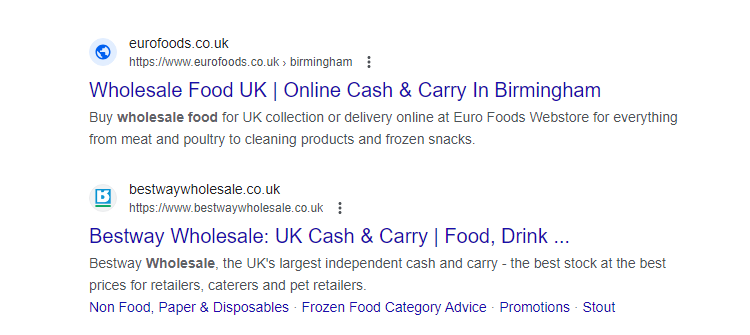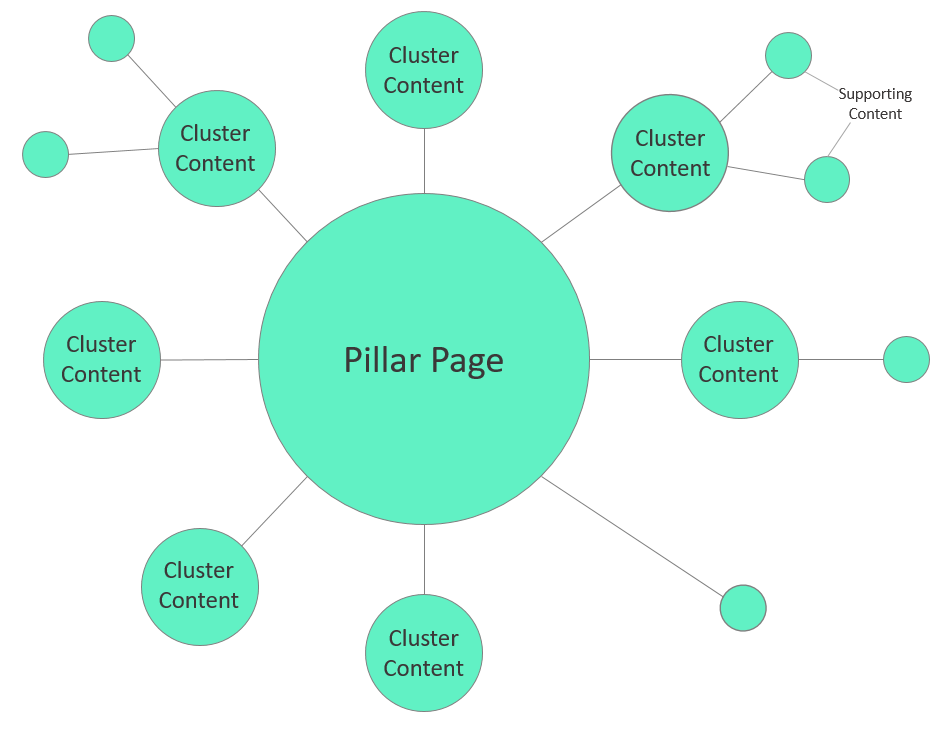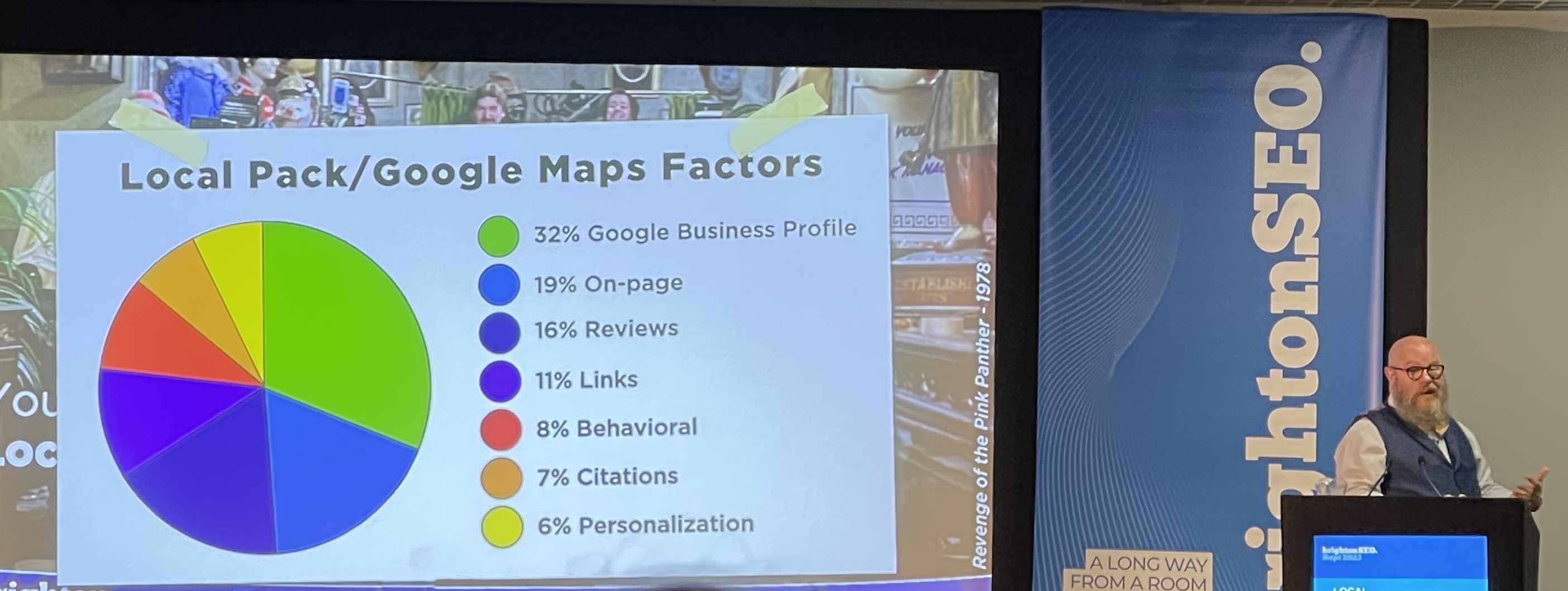On September 15, 2023, two of our SEOs and a content writer travelled to Brighton for a conference that specialises in search, social and content optimisation. I know, it was over a month ago, but sometimes that’s how long it takes to unpack a suitcase full of lessons. We’ve had a chance to put these SEO tips into practice, and we’re ready to share the most useful and intriguing lessons from BrightonSEO 2023.
What is BrightonSEO?
BrightonSEO is the foremost search marketing conference worldwide, hosted in the UK and the US. It brings together speakers from all over the world to share SEO best practices, the latest in content marketing and discussions on search metrics and social media.
“It’s a chance for SEOs to meet, learn and do their job a little better.”
– BrightonSEO
Find out more about how we use SEO at eSterling.
SEO Lessons from BrightonSEO ’23
We would love to share every little thing we learned, but that would be:
- Extremely long
- Time-consuming
- Not as good as just attending the conference yourself
Instead, we’ll continue adding to this article until we have created a full SEO Guide, so watch this space!
These are tips from some incredible people in search marketing, so we’re not looking to plagiarise – you’ll find links to their slide decks in this article so you can get the full picture.
To help you find the advice most relevant to your website, we’ve sorted these tips into two categories: Basic SEO, Content and Local SEO.
Basic SEO Tips
We already know that site-wide strategies work much faster than single-page or single-keyword strategies. And we know that Meta-titles are important. This lesson is more of a reminder to us, but we’re including it because it might be new to you.
Quick Wins
These are the first jobs in any SEO strategy, those which take minimal effort but have a high value. Thanks to Andy Mollison‘s presentation, our SEO team are up to date on the low-hanging fruit to gather early on in the strategy.
Meta Titles
The growth rate for sales from organic traffic can increase rapidly just from templating meta titles. These are the titles that show up on SERPs, which are not necessarily the same as the headings on the page itself.

Meta titles should be specific and relate to the most relevant search queries for the product. For example, if you’re a food wholesaler, you should include ‘Wholesale’ in your meta titles.
For eCommerce websites, you can gain a huge amount of organic traffic by making it clear that customers can buy online in the meta title. This differentiates your page from a brochure website or magazine articles about the product type and reaches people looking to make a purchase right then and there.
Image compression
Making sure all your images are high quality is great, but if the files are enormous they’re going to slow down the site and leave pages lagging behind in the SERPs too. On top of this, slower loading means people navigate away to find a faster solution, so it’s worth compressing images.
Sitewide image compression is possible with WordPress plug-ins such as TinyPNG, and there are plenty of online tools available to support lossless compression and optimise your images.
Image Alt Tags
Use alt tags to help explain to Google what your pages are about. It’s a common practice to add keywords here, but a mistake some make is to paste the same keyword to each image regardless of what is shown.
Alt tags are also used to make your website accessible to users using screen readers. Even if you’re using stock imagery to highlight how stress-free life could be without your product, the alt tag should reflect this. SEO Best practice is to use keywords and relevance in your alt tag descriptions.
Internal Links
Internal links were a key topic at BrightonSEO this year. Julien Deneuville and J. M. Felip discussed methods for ‘wrangling’ internal links on huge sites, while Martin Hayman described how we can build internal links using Topic Clusters (more on this later).
Internal links within your site do three things:
- Help search engines find all of your pages and understand which ones are most important
- Pass authority between pages on your site
- Help users navigate to the most important pages for them
Internal links can often be found in the site navigation, a useful links section in your page footer, or in a sidebar highlighting similar pages. However, according to J.M. Felip, an SEO strategy should prioritise the links in the main section of your page.
These in-context links lead to relevant and related information, helping your users find related content quickly and helping Google’s crawlers understand the relationships between your pages.
Our Digital Marketing team provide Organic SEO and eCommerce SEO services to businesses of all sizes. Contact us today to discuss an SEO strategy for your website.
SEO Content
We’ve heard so many times that ‘Content is King’ and, as a content writer, I have to agree: nothing does more for a page than content. However, just adding a blog post every week or stuffing your pages full of keywords is a rubbish strategy that won’t get you anywhere.
Content for content’s sake is not the point. What SEO’s mean when we say ‘Content is King’ is that the sites with the most comprehensive, readable, well-linked content on a topic overall will rank more highly than a single page that vaguely skirts around the edges of the subject, without relevance to the rest of the site.
The point of a search engine is to help users find what they’re looking for online. The point of content is to answer queries. Good content will signal to the search engine that this website is a trustworthy source.
But how do you create content that stands out in a saturated online space?
Highlight your topical authority.
Content Clusters Put Information Front And Centre
Content clusters or topic clusters have been a great SEO content strategy since around 2016 when Google’s search algorithm began to favour topic-based content. The idea of topic clusters is to link related content together around a central ‘pillar page’. This creates a user-friendly structure and a search-friendly system that can easily be crawled and indexed.
The reason for using this strategy is to strengthen Topical Authority. Every domain is given an Authority score, based on how trustworthy the website appears to search engine algorithms. With quality content, internal links and backlinks, a website can gain high authority and thus, high rankings.
Related content can be internal or external, including blog posts, social pages, guest blogs and site pages. However, creating a chaotic web of links between all of your existing content on a particular subject can become unmanageable and difficult to navigate from a consumer mindset. This is where Pillar Pages come in, and I was lucky enough to get a refresher on this subject from Martin Hayman, author of The Organic Advantage at BrightonSEO this year.
Pillar Pages can be Short or Long
Also called keystone pages, core pages or cornerstone pages, this is the central hub to organise all your topic content around. A good pillar page will:
- Summarise the topic adequately
- Contain links to all cluster pages
- Be easily found on the main website.
Sub-topics
Around each pillar, high-authority sites have sub-topic “cluster” pages. These go into greater depth on particular aspects of the topic.
Sub-topics might be instructions for use, benefits of a product, comparisons with other topics, use cases, and so on.
Link each cluster page to the central pillar, and to other cluster pages. As you add more sub-topics, you should update the pillar page with a relevant link, so that users can navigate up or down the chain, zooming in and out of the subject.
Supporting Content
Hayman also recommends creating supporting content, blog posts that are relevant to the topic, social media posts, and so on. These provide an extra layer of internal and external links to bolster the cluster as a whole. They can link to the pillar page, cluster pages and each other, creating a network of information with the pillar page at the top.
To make pillar pages and content clusters work for your website, the key is to build internal links between them. This strategy gives a good structure for high numbers of internal links, but a scatter-gun approach is ill-advised.
Plan topic clusters well to ensure all of your website’s internal links are high-quality and relevant to the topic that you want to become an authority on.
Most importantly? Write for humans, not search engines
Easily-accessed AI language models such as Chat-GPT have led to a deluge of content that is vague, unorganised and poorly written, not to mention down-right wrong. A poor understanding of SEO can often lead us down the path of creating any content that contains high-volume search queries, and using AI to speed this up seems like a no-brainer.
Avoid this SEO pitfall. We need to remember that we’re trying to answer queries in the most efficient way possible for the humans who are searching, not the algorithm itself.
And search engines like Google are wise to this: the latest ‘Helpful Content Update’ makes it clear that “people-first content” will always rank higher than content created to trick search engines.
This means being reliable, original and substantial. It should also be well-produced, present information in a trustworthy way and focus on putting people first.
“People-first content means content that’s created primarily for people, and not to manipulate search engine rankings.”
Google also lists some warning signs to identify content that puts search engines first, including:
- Using extensive automation to produce content on many topics
- Mainly summarising what others have to say, without adding value
- Leaving readers feeling like they need to search again to get better information
- Promising to answer a question that actually has no answer
Here’s how to avoid writing unhelpful content.
- Put in the time to fully understand a topic. Research always leads to more valuable content than using AI straight off the bat, because you can get the facts right and identify gaps in existing content and write to fill that niche.
- Research also shows you what a trustworthy source looks like in the topic field. You can then replicate those features, such as citing sources, including technical drawings or gathering quotations and reviews.
- Write content for the intended audience. This all lies in the tone of voice you use, which can help your content stand out from the crowd. Companies using the same old AI-generated text tend to get lost in a field of similar content. Original, people-first content has the upper hand when showing Google that your content is uniquely different to competitors.
- Answer human questions like a human would! Find out what questions users are asking using tools like Answer The Public and SEMrush. This way we can discover which queries searchers are actually using most often. Answer them fully.
For help creating a content strategy or for more information about our content marketing services, eSterling is just a phone call away.
Local SEO
Some agencies still think Local SEO is creating 50+ landing pages with “Keyword Place Name” headings for every city where the client wants to gain customers.
I’m exaggerating, but I have written enough content that suggests a company is based in different cities and neighbourhoods for absolutely no results.
We don’t want to do this. It takes a long time, it’s expensive, and it creates complex site structures that don’t do much if your business isn’t in the area.
Use Your Google Business Profile
Ranking as a local business depends much more on your Google My Business Account, the profile that shows up in the Businesses section of SERPS when people search for ‘[keyword] near me’. This is extremely relevant for restaurants, repair garages, cafes, grocers, opticians, dentists, and so on. If your customers are all local, you need to focus your efforts here.
Looking at any results page for this type of query on most search engines, you can see that even the top-ranking pages don’t cut through. Below the paid Ad results there’s an embedded Map, complete with location pins and a list of the businesses they highlight.
Local SEO is about being the first one on this list, not just the top-ranking page on SERP. It makes local search a different ball game to your regular SEO.
To show up in a particular area, businesses should treat their Google Business profile like a landing page.
Bare Minimum Local SEO
These are the necessary tasks you need to do to help people find your business locally. Without these, Google will put a business with better profiles ahead of you, even if your address is closer to the location. If you’re a fairly niche business, or the only shop in town, you may get away with just following these steps.
Keep the details up to date. It’s no good having a listing if it shows your old phone number or the wrong address.
Add photos. This increases the chances of having your business at the top of the list. Even better if they’re high-quality, high-resolution photos that show the best of your business.
Don’t Add Keywords. Just use the name of your business. The category of business will help people find you, but adding keywords to your business name here can lead to account suspension.
Use a local phone number. This is additional proof of your location for search engines and customers. If you want to rank in Wolverhampton but you have a Coventry phone number, you’ll rank lower than other businesses.
List the correct opening hours. Customers rely heavily on the opening hours listed on SERPs, as they’re often easier to find than those on your main website. Having the wrong hours could lead to negative reviews, leading to loss in rankings, leading to a loss of business – you get the picture.
How do I do Local SEO for multiple branches?
You can manage multiple locations from a single Google business account, so each branch or location can be listed with a local phone number, a local address and correct opening hours.
Brilliant Local SEO
Get Detailed Reviews. According to Greg Gifford, 30% of consumers read reviews for local businesses, and they are a major ranking factor for Google. Encourage your customers to leave good reviews as often as you can. The results are even better if they add photos or write a lot of detail, as these reviews are more likely to show up first.
Give Good Reviews a Thumbs Up. Do this from as many accounts as you can, because 2 or more thumbs help the review stay visible for longer.
Use Attributes. By tagging your business as ‘dog-friendly’, ‘LGBT-friendly’, ‘Gluten-free’ or ‘Wheelchair Accessible Entrance’, you’ll gain from searches using these terms. Customers can also filter their search results by attributes, so you want to describe your business as fully and accurately as you can.
Upload videos to your profile. There is a 75MB limit, which means you can use around 35 seconds of video content to highlight your business. Show services in action, a tour of your café, or introduce yourself.
Beyond Google
It’s not just Google that offers business profiles. There are plenty of potential customers searching on Apple maps and Bing maps, and while the majority are on Google, it’s worth at least claiming your listings on all search engines.
According to Greg Gifford, 6/10 businesses have not claimed their Apple Map listing. Once your Google My Business profile is optimised, use Apple Business Connect to optimise there as well. It’s also worth optimising on Bing maps and takes very little time to do so.
The team at eSterling specialise in Local SEO services. Contact one of our team today to discuss how we can help you.
A Culture of Learning
SEO is continually evolving to keep up with search engine algorithms. Because of this, we put a lot of value in learning the best practices and new thinking in search. By investing time in learning, experimenting and implementing new strategies, eSterling continues to offer the best SEO in the West Midlands.
Many thanks to the BrightonSEO ’23 Team for having us, and we hope to come back next year.


